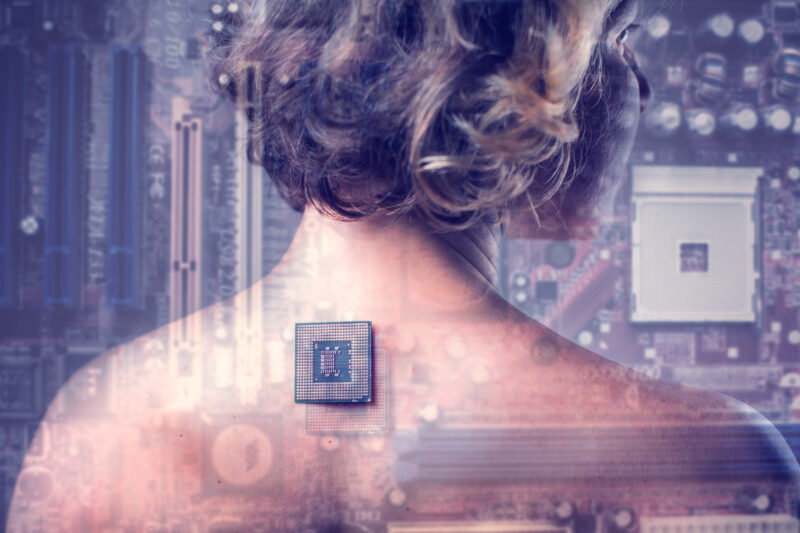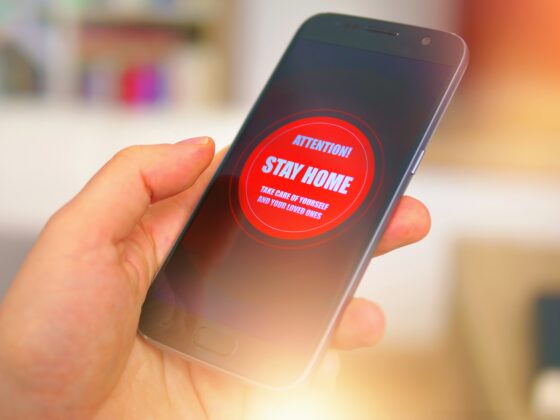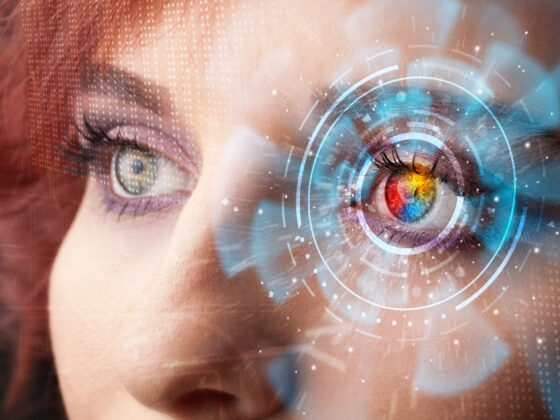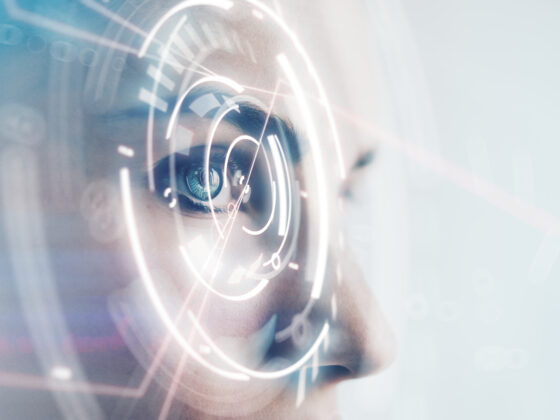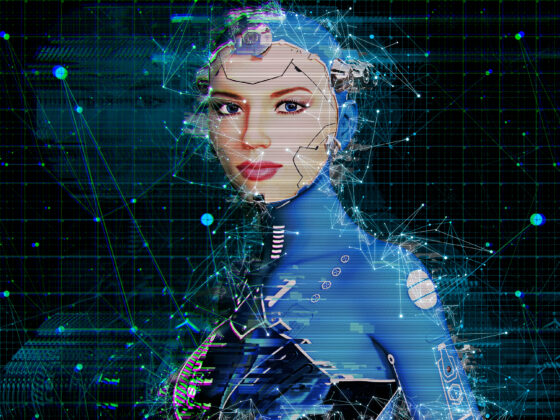“It’s very plastic. I just love this lifestyle because I love being a doll. I love being emersed into being plastic and fake. It makes me feel alive.” – The Dolls
“A man’s brain and body is a battery, and nerves correspond to wires,” announced Prof. Edgar L. Larkin in a 1910 San Francisco Call article.
The article describes how Drs. Albert J. Atkins and E. J. Lewis used a man’s stomach to charge an ordinary telephone so that it conveyed sound. The subject swallowed two platinum electrodes so that they touched the walls of his stomach. The electrodes were connected by copper wires to a telephone and a microphone, resulting in “human electricity flowing over the wires, rendering audible sounds”.
Although it all seems a bit hokey now, these doctors were on to something. We now know that our very DNA can “act like an electrical wire to transfer electrons quickly across long distances”.
“Nature is the best chemist and knows exactly how to take advantage of DNA electron-transport chemistry,” says Jacqueline Barton, the John G. Kirkwood and Arthur A. Noyes Professor of Chemistry at Caltech.
And this is what we need to keep in mind as we delve into this topic. NATURE IS THE BEST CHEMIST. Scientists are trying to say that they know better. But they don’t and they never will.
The latest “breakthrough” is the ability to harvest our energy for 6G wireless technology.
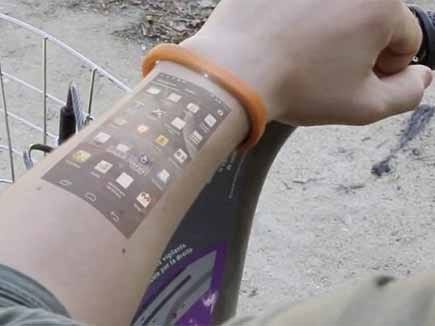
“In the future, we want to be able to power your wearable electronics without having to include a battery,” said Jianliang Xiao, senior author of a new paper about a wearable device that transforms the human body into a biological battery. It’s called “electronic skin,” and it looks and behaves much like real human skin.
Yes, they want to turn us all into antennas.
A UMass Amherst team says they have created a low-cost and innovative way of harvesting waste energy from Visible Light Communication (VLC) — using the human body as an antenna. Their invention can recycle waste energy to power wearable devices and possibly larger electronics as well.
“VLC is quite simple and interesting,” says Jie Xiong, professor of information and computer sciences at UMass Amherst, in university release. “Instead of using radio signals to send information wirelessly, it uses the light from LEDs that can turn on and off, up to one million times per second.”
Researchers experimented with resting a coil against all kinds of surfaces, including wrapping it around the human body. They found that “people are the best medium for amplifying the coil’s ability to collect leaked RF energy”.
The LED acronym stands for Light-Emitting Diode and it isn’t good for you:
The diode is an electrical component used in many technologies, such as TVs, radios, and computers. It’s built to emit bright light when an electric current passes through it.
LEDs produce short-wave, high-energy blue light, which has been linked to biological and sleep disturbances.
It is also associated with blue light hazard — when an intense light source causes damage to the retina. The retina is the part of the eye that changes light into impulses that become the images we see.
Who cares. We must save the environment—even if you lose your eyesight in the process! Batteries = bad for the environment. LED lights = good.
And okay, maybe your eyesight is being ruined by LED light, but Max Hodak, co-founder Neuralink along with Elon Musk, has a brain-computer interface (BCI) startup called Science Corp. He’s working on a next-generation prosthetic eye, called Science Eye, described as “gene therapy with a micro-LED display over the retina”. Hodak hopes Science Eye will both provide a new treatment for blindness and eventually pave the way for the future of virtual and augmented reality.
Kind of seems like a contradiction—using LED to treat blindness, but never mind.
Hodak uses the same justification for his experiments as Elon Musk—caring about curing the illnesses of the weak and vulnerable while knowing full well they are creating the problems they then turn around to solve—for a billion-dollar price tag. Besides which, Science Eye has the potential to enslave people in “entertainment prisons” where they are so addicted to the distractions in the fake world and the fake products that they can buy to build their fake houses and adorn their fake avatars, that they won’t even notice how vague and hard to focus the real world is becoming.
Here, we must take a slight detour into body image.
Superdrug (yes, it’s really called that) is a UK beauty product company that caters to young people and promises that their products are “happiness guaranteed”.
Beauty products are what the consumer is first drawn to, but they are not the ultimate goal. No beauty product will ever make a girl or boy perfect, the way their favorite influencers look on social media. Superdrug is ready to help ease the growing dissatisfaction young people feel with their bodies. They offer a Health Services Hub, where you can contact an online doctor, book an appointment at a clinic, fill your prescription drugs and start your body-altering journey with face fillers, Botox and the like.
Beauty apps add further to a person’s dissatisfaction with their real body. These apps can now make the user look so “perfect” that it becomes hard for them to accept their real selves.
moreBeaute2, calling itself “The ultimate photo app for posers and Photoshop junkies”, is one example:
Who needs botox and cosmetic surgeons and all those creams and potions that promise to make your skin look better? Unless of course, you want to get out in the real world and can’t possibly hide behind your filters and airbrushing.
What’s the goal with all of this new technology? If it’s to make users feel more confident and comfortable within their real skin, it isn’t working.
One girl describes how “using filters on videos became second nature – until she caught a glimpse of herself in the mirror one day and realized, to her horror, she no longer recognized her own face”.
“I just felt so ugly … It’s a very scary moment,” she says.
“When you’ve got that filter up all the time … you almost disassociate from that image in the mirror because you have this expectation that you should look like that. Then when you don’t, the self-destructive thoughts start. It’s quite vile the way that you then perceive yourself.”

This leads to the next step. Altering one’s body. Not everyone is lucky enough (or cursed enough) to be able to afford it. Some of them become social media “Influencers”. Cutting up their bodies for the entertainment of their followers has become a multi-million-dollar industry. They have to keep slicing into their bodies if they want to stay relevant and not get dethroned by someone who is willing to do more.
Here’s what a threesome called The Dolls have to say about it all:
“We gotta stay young and beautiful. Snatcha Beauty.”
“As a trans person I can speak for myself. Surgery has helped me become a better person, feel like a better person, and feel beautiful.”
“It’s very plastic. I just love this lifestyle because I love being a doll. I love being emersed into being plastic and fake. It makes me feel alive.”
Skittles, the guy in the middle, says, “Why should I blend in and be like everyone else? If I can inspire anyone to go get your lips done, go get your teeth done. Anything that’s going to make you feel more confident, why not go and do it. “
Except that it doesn’t make anyone feel more confident. It’s self-abuse and that only leads to self-loathing.
This is where the condition we’ve been hearing a lot about lately, dysphoria, comes in, defined as “a mental state in which a person has a profound sense of unease or dissatisfaction. While not a mental health diagnosis on its own, dysphoria is a symptom associated with a variety of mental illnesses, some of which include stress, anxiety, depression, and substance use disorders”.
So, this is why I took the detour into talking about body image. Because this obsession with the perfect body image leads to self-loathing and a disassociation with our real bodies.
This allows the overlords to unleash their scientists up on us to do the most outrageous things to our bodies and our minds, like turning us all into antennae. There is no other way to understand why people would accept this type of invasion without understanding to what extent we have already been conditioned to allow our bodies and our minds to be violated.
What’s truly horrifying is that people don’t see it. We look back at lobotomies and wonder how a civilized society could have allowed such operations. How could they have believed it was actually for the patient’s own good. How could they have looked on women who were “over-sexed” or homosexuals as deviants who needed to be turned into zombies?
But how is Elon Musk gleefully announcing he wants to drill holes in your brain and install microchips any different? How is cutting off the body parts of children so they can “change their sex” any different?
This process of turning us into empty shells to be used and abused by outside forces is another form of lobotomy. It is a million times worse than anything that’s been done in the past because they want to do it to everyone.
Our natural instincts tell us all this is very wrong. But our natural instincts are being lost in a sea of pulsing LED lights.
Chen-Yu Hsu, a PhD student in the Computer Science and Artificial Intelligence Laboratory (CSAIL) notes that “We live in a sea of wireless signals, and the way we move and walk around changes these reflections. We developed the system that listens to those reflections … to better understand people’s behavior and health.”
What this means is that they want to better understand our behavior and health. They do not want us to understand ourselves. They want systems around us and inside of us, watching and listening all the time.
Just look at this map of the Starlink satellites that cover our earth in pulsing electricity.
All the Starlink satellites currently in orbit around Earth pic.twitter.com/UbuENgkpym
— Latest in space 🪐 (@latestinspace) February 18, 2023
Musk, in partnership with the US government and its military, is determined that no one, not even those in the remotest corner of the jungles of Africa or the Amazon, should be without a hypnotic device, pulsing with blue light, with your body as an antenna connecting you to the vast hive mind. Hypnosis refers to an atypical state of attention and consciousness in which voluntary thinking and action are bypassed by suggestions. And as we’ve seen in Acceptable Torture, and further here, this is exactly what is happening.
Tracking systems like Chen-Yu Hsu’s “Marko” mean everyone can be turned into an antenna and put into a digital prison.
IBM’s Patent # US7076441B2, obtained in 2001 and implemented in 2006, chillingly shows how the intent from the beginning was to track and trace every one of us.
The present invention provides a new method and system for using RFID tagged items carried on persons to identify and track the persons. A person carrying RFID-tagged items can be scanned to identify a collection of items that the person is carrying. The present invention assigns a tracking number to that person based on the collected RFID tag information, and the tracking number is used to track the person’s movement.
In 2003, consumer watchdogs warned in a joint position paper, “RFID has the potential to jeopardize consumer privacy, reduce or eliminate purchasing anonymity, and threaten civil liberties.” Here are some of the ways this is being accomplished:
Unique identifiers for all objects worldwide. The Electronic Product Code potentially enables every object on earth to have its own unique ID. The use of unique ID numbers could lead to the creation of a global item registration system in which every physical object is identified and linked to its purchaser or owner at the point of sale or transfer.
Hidden readers. RFID readers have already been experimentally embedded into floor tiles, woven into carpeting and floor mats, hidden in doorways, and seamlessly incorporated into retail shelving and counters, making it virtually impossible for a consumer to know when or if he or she was being “scanned.”
Individual tracking and profiling. If personal identity were linked with unique RFID tag numbers, individuals could be profiled and tracked without their knowledge or consent. For example, a tag embedded in a shoe could serve as a de facto identifier for the person wearing it.
These RFIDs have now been developed into identifiers like Marko, using people instead of objects as a wireless movement-tracking system that will collect health and behavioral data.
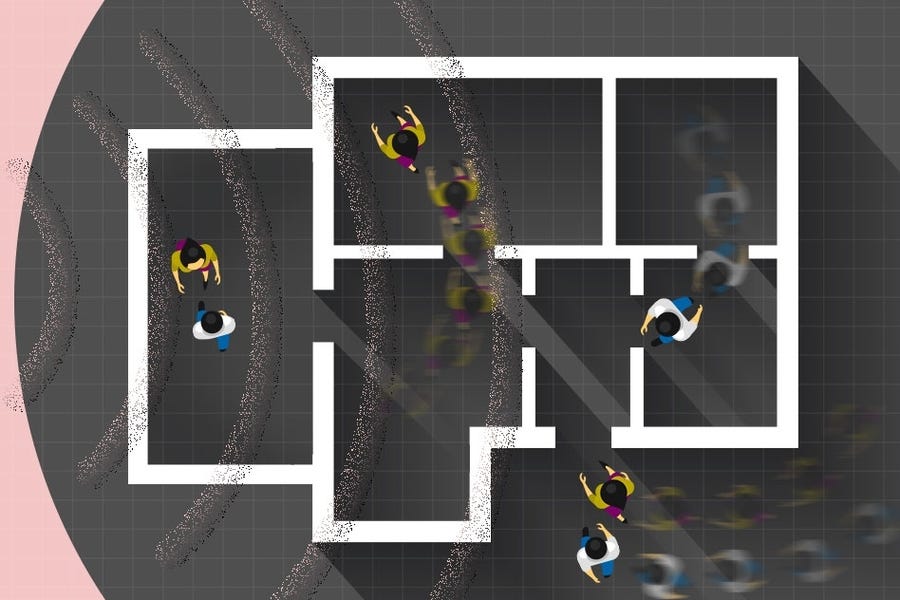
Marko transmits a low-power radiofrequency (RF) signal into an environment. The signal will return to the system with certain changes if it has bounced off a moving human. Novel algorithms then analyze those changed reflections and associate them with specific individuals.
The system then traces each individual’s movement around a digital floor plan. Matching these movement patterns with other data can provide insights about how people interact with each other and the environment.
In a paper being presented at the Conference on Human Factors in Computing Systems, the researchers describe the system and its real-world use in six locations: two assisted living facilities, three apartments inhabited by couples, and one townhouse with four residents. The case studies demonstrated the system’s ability to distinguish individuals based solely on wireless signals — and revealed some useful behavioral patterns.
In order to “train” the system to do this, the person being tracked must wear low-powered accelerometer sensors for a few days, which can be used to label the reflected radio signals with their respective identities. The sensors never have to be charged, and, after training, the individuals don’t need to wear them again.
Understand what this means. Once you are identified by the machine, there is nothing you can do to stop it from tracking you. There is no device for you to remove. You are the technology. You are the antenna.
There are so many terrifying ways this could be used. For example, did you know that if you are unvaccinated against COVID, you are more likely to suffer from physical and mental health problems? At least, that’s what Psychology Today says in an article titled: Troubles Ahead for the Unvaccinated:
-
A study on brain tissue identified changes in the brain in COVID-19 patients, including loss of grey matter.
-
Possible long-term effects of COVID-19 and its variants include brain pathologies and cognitive deficits.
-
The long-lasting cost to society of post-COVID cognitive impairment could be suicides, crimes, and failed friendships.
Imagine your unvaccinated status being used as an excuse to monitor you with Marko. Or maybe Alexa has picked up some words or phrases you use in your home that identify you as an insurrectionist. Or your genetic code identifies you as likely to get heart disease or diabetes.
No worries about remembering to take the medications you’ve been prescribed because a DNA test has determined that you have criminal tendencies. Marko will make sure you take your meds and if you do not, it will inform the clinician who has been assigned to your case.
Feel like leaving your house and wandering around whenever you want to? The machine will know and flag it as a sure sign of a rebellious citizen who doesn’t take the impact of his carbon footprint seriously. Perhaps you need a few weeks in a reeducation camp.
One of the oddest statements I read in my research for this essay was Carnegie Mellon University researchers assuring us that being able to map human bodies through walls using Wi-Fi signals is a “breakthrough” that is “helpful to privacy”.
This is how insane our world has become. The statement contradicts itself yet the most ‘intelligent’ among us are claiming it. They are the ones who need to be monitored for dangerous behavior, not the rest of us.
The long-term effects of all of this on our bodies and our minds will be catastrophic.
From Scientific American
All our thoughts, sensations and actions arise from bioelectricity generated by neurons and transmitted through complex neural circuits inside our skull. Indeed, so fundamental are brainwaves to the internal workings of the mind, they have become the ultimate, legal definition drawing the line between life and death.
Brainwaves change with a healthy person’s conscious and unconscious mental activity and state of arousal. But scientists can do more with brainwaves than just listen in on the brain at work-they can selectively control brain function by transcranial magnetic stimulation (TMS). This technique uses powerful pulses of electromagnetic radiation beamed into a person’s brain to jam or excite particular brain circuits.
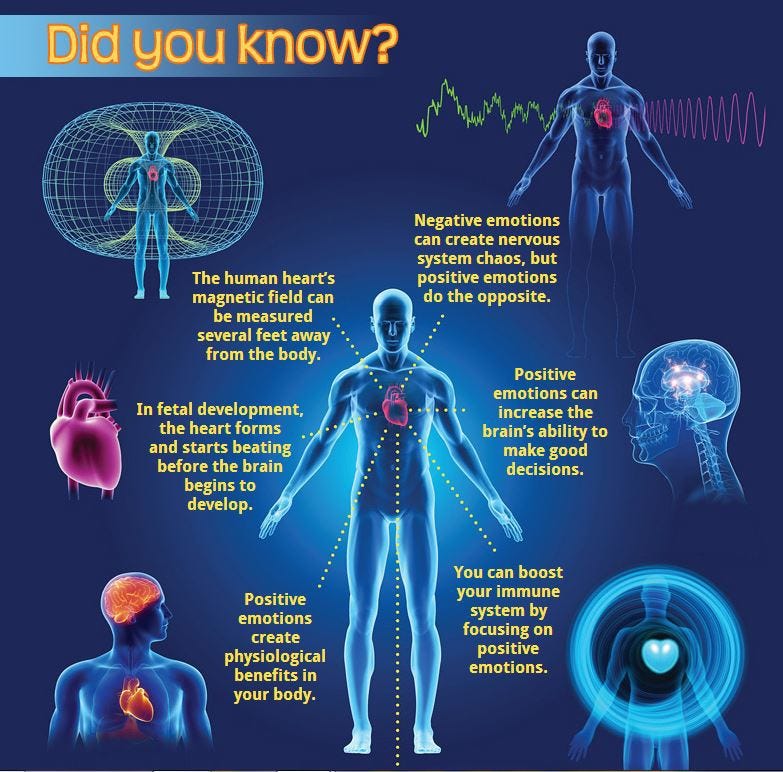
The chart above shows how electrical currents affect us and how the positive and negative are intricately woven into the fabric of our beings.
Now, recent research shows that DNA functions as an electrical wire in a complex circuit. Critical enzymes that repair DNA have an electrical mechanism involving clusters of iron and sulfur. These metallic clusters allow proteins that are part of the genetic and epigenetic complexes to move electrons. These same clusters operate in many other biological processes including photosynthesis and mitochondrial energy production. Do these electrical properties allow DNA networks to respond instantly to mind? How important are these newly discovered electrical properties of DNA and are they related to a theory that electromagnetic forces connect mind, matter and brain? What is the relation of electric DNA and mind?
We do not understand the workings of our minds. Yet we are giving our minds over to mad scientists who want to control them. Every natural instinct that we have tells us what they are doing is wrong. We mustn’t let them convince us otherwise.
Which brings us back once again to what we said at the beginning:
NATURE IS THE BEST CHEMIST.
When I posted on Twitter about this idea of our bodies being used as antennae, here’s one person’s response:
It’s actually quite a smart use of residual RF leakage from LED lighting (which is everywhere), uses a copper coil in contact with your body which will then power a Fitbit/smart watch or similar. It’s just a power source, microwatt level. Free power basically. Good idea.
This shows how wearing Fitbits/smart watches and other wearable devices have conditioned people to think it is perfectly acceptable for your body and mind to be violated more and more until there is nothing left of your real self except an empty shell. Controlling our minds from the inside is the last frontier.
Experts who push this technology on us for our health and safety don’t mention the problem of light pollution.

The European Space Agency (ESA) recently put out a report on space debris, mentioning that the increasing number of satellite launches, especially satellite constellations in low-Earth orbit like SpaceX’s Starlink, is creating an unsustainable impact on the space environment. According to ESA, there are more than 30,000 pieces of space debris that have been recorded in orbit around our planet, and according to models, there could be more than one million objects larger than 1 centimeter in size.
The increasing amount of junk will interfere with what they call “public access to the stars” — the right of ordinary people to look up and see an unpolluted night sky. How many of us can remember the last time we sat around the campfire telling stories or singing songs, looking up at the starry sky and feeling as if we are lost inside of it?
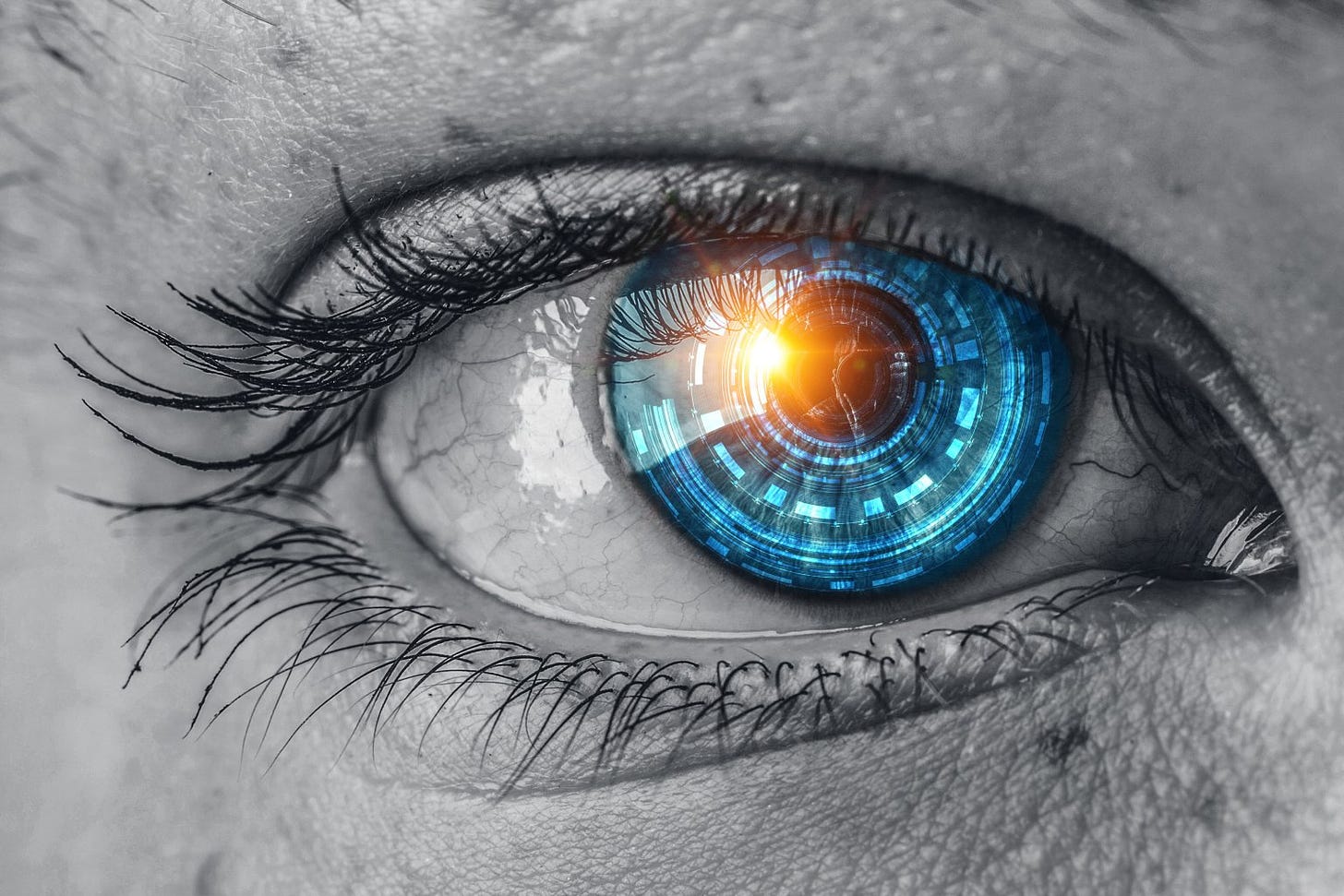
Our eyes were designed to receive the light frequency of the Sun. Rays strike the optic nerve, which signals the pituitary gland, triggering the release of hormones and neurotransmitters that regulate our bodily functions.
The mitochondria of each cell in the human body produce almost one’s entire bodyweight in adenosine triphosphate (ATP) per day (!) and the human body can only live for 15 seconds without it, as compared to 4-10 minutes without air, 3-4 days without water. The overwhelming percentage of our ATP production comes from the light we receive through our eyes and skin.
With many of us staring at screen devices or spending most of our time indoors with energy-saving LED lighting, few of us are aware of the adverse effects that LEDs have on retinal health, hormonal health and mental health, because these do not emit the correct frequency of light, in order for us to produce ATP.
LED lighting may actually be one of the most detrimental non-native EMF radiation sources you’re exposed to on a daily basis, which can have very serious long-term ramifications. Ongoing exposure can lead to age-related macular degeneration (AMD), which is the leading cause of blindness in the United States and elsewhere. Other health problems rooted in mitochondrial dysfunction may also be exacerbated, and these run the gamut from metabolic disorder to cancer.
I hope people will come to realize that this isn’t just about “recycling” energy. It’s about losing our real selves inside a fake reality. It’s about allowing our bodies and our minds to be tracked and traced. It’s about becoming the technology. It’s about all the horrifying reasons why most people don’t have a problem with any of this.
What happens when you light a candle? The warm, yellow glow calms you. You can feel it.

They are making laws against fireplaces and campfires. But we can still light candles. Turn off the lights, turn off the TV, put the phone away. Listen to music, or better yet, listen to the silence. When was the last time we sat quietly, doing absolutely nothing except drinking in the peace?
On a warm summer evening, invite a few friends over, light some candles and sit outside having an old-fashioned conversation. Before bed sometimes, I like to listen to a vintage radio show “Suspense” from the 1940s, where famous movies stars like James Cagney, Gregory Peck, Anne Baxter, Barbara Stanwyck, Bette Davis, and Richard Widmark read suspenseful short stories. Back in those long-gone days, the program was only on one night a week, and everyone would gather around the radio and listen. Now, I like how it includes the old reminder not to miss the next episode of “Suspense!”
Do not become an antenna for more data collection. Do not let them blind us to the real world as we stare into the blue light of our devices. Let’s keep our natural eyesight intact. Let’s keep nature as our chemist. Let’s continue looking upward to the wonder and beauty of the stars.
To send us off in a happier mood, here’s my little mice dancing under the moonlight from A Picnic with the Rumpoles. Notice they are not connected to any devices. No one is monitoring their behavior. They are just having a wonderful time.



